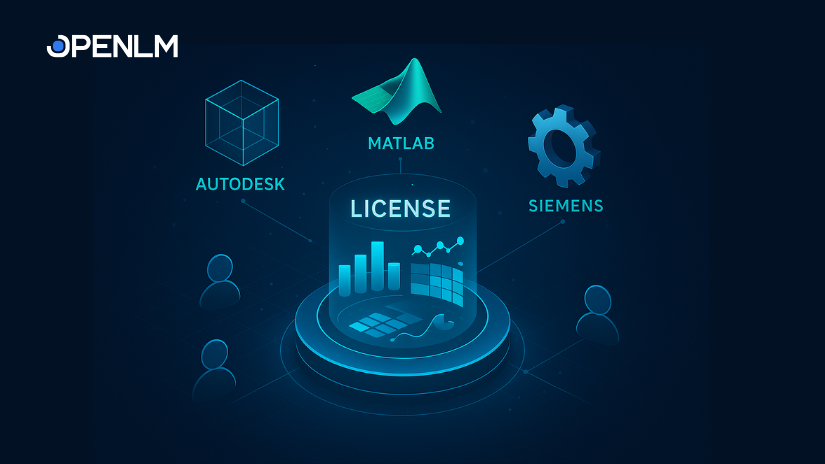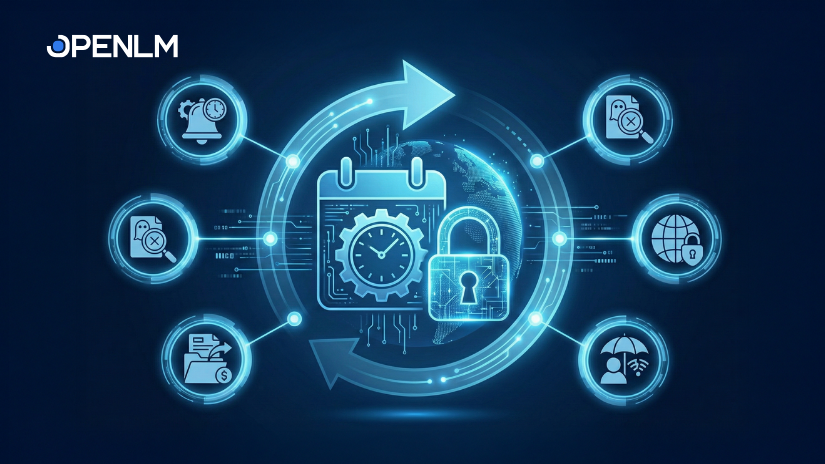While OpenLM was designed to manage licenses for engineering and scientific COTS (custom-off-the-shelf) software, many of our customers have at least one, and sometimes many, custom-built software tools. Such custom software is usually protected by a license agreement, but does not have a formal license manager application to make compliance simpler. OpenLM recognises that a customer can be using software that falls in this category and has a name for it, which is “unmanaged software”. We also have a solution for managing the unmanageable, our product, the OpenLM App Manager. This product provides the license administrator with a way of monitoring and controlling usage of any software application, enabling him to gather accurate data on that usage, as well as limiting over-usage where it creates a risk of non-compliance or incurs unnecessary costs.
What the App Manager primarily supplies is a means to automate the company’s software allocation policy. It can be used for products that are managed by the OpenLM core product, such as AutoDesk, as well as products that are commercially available but not part of the engineering software family, like Adobe Acrobat. The only requirement is that the software is executable (i.e. is in an *.exe file) and has processes for the App Manager to give you control over any software.
Table of Contents
ToggleWhat Can be Controlled? – Access
You can tailor the accessibility of any software product, licensed or not, to meet the exact specifications of your environment. This is done via parameters that you set to permit or deny usage and consumption by software version, location and time.
For instance:-
- you can limit access to normal working hours for a particular location.
- you can block access to users in the UK from 15:00 to 18:00 EST because that is peak usage time in Boston and New Jersey.
- you can limit usage to a specific software version for a user group where you are running more than one software version concurrently.
- You can also permit a specific group access (because they have priority), while denying other users, or limiting their access.
What Can be Measured? – Usage
Then you can also measure and manage license consumption and get accurate values on such usage. This is very helpful even with software products that have license managers, as it provides you with your version of the truth and not the vendor’s opinion of which licenses were used and how much was consumed in time, tokens or any other measure. For custom-written software this is ideal, because you are provided with a view of how the software is being used and identify how to economize on usage. This can also help you define your policy and business rules for the software you need to manage.
Managing and Monitoring at Feature Level
One of the challenges with custom-written software is that it can include features that have their own licenses, via an API or a call to a product, such as Adobe Acrobat in order to generate a PDF. Such callas and interfaces can generate costs or even be non-compliant for your agreement with the called product. You can also set up business rules to manage these circumstances.
Overall Benefits
Limit or prevent excessive consumption, which can result in nasty cost surprises.
This could be the case where the custom software calls an Autodesk product that is managed via a token license – each call will eat away at your total token license annual purchase and may result in you having to top up during the year. The call may only require one minute of usage but costs eight minutes and at least one token. This could be a design flaw and may require a change to the custom application.
Reduce or Avoid Denials at Peak Usage
This is a common problem with all software, even with license managers. Here is a way of assuring that those who need the software the most will get it when they need it, using the time and location parameters. You can even tailor the need to a specific group or even a single user.
Use only the Appropriate Version
If there are multiple versions running simultaneously, you can tailor your accessibility to permit or deny users access to part or all of a product. For instance, let’s say that a call to AutoDesk is essential for users on a particular project. You had a design change implemented to prevent users accessing Autodesk because of the problem we identified as unnecessary consumption. However, you retained the previous version for a small group of users or super-users. Only they are allowed to access this particular version. What is more, unauthorized software running on a workstation or laptop can be picked up and reported on.
Reduce Costs and Avoid Non-Compliance Risks
You will now know the true costs of running the custom product and what you should be paying for your usage, instead of relying on your vendor/development shop’s opinion of what is owed. Where there are APIs and calls to other licensed software you can manage the costs incurred making these links.
Manage your Software Exactly as you Wish
You have the power to control license allocation and management just the way you want, that fits in with your business model and value proposition. You also have the flexibility to change the rules as circumstances require.
Comprehensive Reporting
Reports can be generated that show you exactly what is going on with the software you want to control. While your current need will be for your custom product, you can use it for any software used in your environment.
What You Need to Use App Manager
In order to take advantage of the App Manager, you must first install our OpenLM Core Product. You will also need to download OpenLM Broker (there is no charge for the Broker, but it does have a separate license). To get a bird’s eye view of what each workstation is up to, you need to install OpenLM Agent on each station, but this depends on what level of control you want to implement.
For more information on how App Manager Works, watch our short videos at:-
https://vimeo.com/263134305 or https://www.youtube.com/watch?v=s8G1DqL1GBU
We also run a webinar for more in-depth information – https://www.openlm.com/webinar-registration/
For more advice, or a discussion with a consultant, please visit our website at openlm.com





